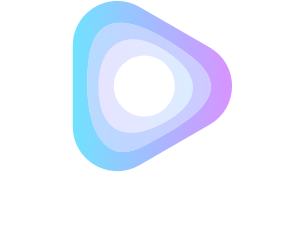According to a recent report released by the Institute for the Future (IFTF) and Dell, 85% of jobs that will exist in 2030 haven’t been invented yet. The rapid adoption and proliferation of new technologies will, to say the least, keep us on our toes.
Microlearning has been on the rise for quite a few years now. About 27% of retail businesses, 22% of the finance and insurance industries, and 26% of all businesses used microlearning principles for training already in 2017. According to a study by Fosway, the global pandemic and remote work have forced 94% of L&D experts to alter their learning and development strategies. In this post-pandemic era, microlearning is the best way to train employees effectively. But now it’s time for the next improvement by offering microlearning in the shape of live interactive gamified sessions as part of a broader hybrid learning strategy.
This is the way to keep up, today’s employers need to be organized for constant workforce upskilling and reskilling to respond to the fundamental changes coming down the pipeline. While even the most adaptable among us felt an instinctual fear at the thought, the reality is that it won’t be as doom and gloom as it sounds once you have organized for adapting to changes we face. Make sure that “learning in the flow of work” (LIFOW) is one of your priorities. Putting modernized hybrid L&D infrastructure and strategies in place helps towards increased adoption, improved retention, and a more resilient workforce.
How can learning in the flow of work (LIFOW) improve workforce resilience?
LIFOW is the process of setting employees up with the tools to continuously gain the skills and knowledge they lack today and those they will need tomorrow without disrupting current operations.
Here’s the thing: today, there’s a troublesome gap between the skills present in an organization’s workforce and the skills it needs to stay competitive. This disparity spans industries: 87% of CEOs note that their organization has “employee skill gaps.” Further compounding the problem, the majority of them either don’t have a learning and development (L&D) strategy or lack confidence in the one they do have. And this problem is only set to compound at an ever-rapid pace with changes in technology.
It’s not just the leadership teams who want to upskill or reskill: development opportunities are cited as the second most important contributing factor to workplace happiness. But although they have the intention to develop themselves, the reality is that most of them find it hard to actually do it, especially when the shape in which learning is offered is hard to digest. In today’s world your employees life is filled with communication and entertainment that’s full of social interaction and good looking video. So when competing for their attention you need to make sure your offering is attractive enough to keep them motivated for what you have to offer them.
But there’s another obvious problem.
The day-to-day demands of work tend to leave little time for learning. On average, we have only 24 minutes per week available for education.
A well-planned LIFOW strategy for your learning & development program can help you bridge that gap within existing time constraints. Let us show you how to build one.
Why unstructured LIFOW with on-demand microlearning often fails
Typical corporate microlearning L&D strategies involve keeping an internal wiki of on-demand how-to videos or text-based instructional guides. The thought is that your team, when they have a few minutes of downtime, can take charge of their own learning (unstructured LIFOW).
These resources usually take somewhere between a few minutes to an hour of their time, and on-demand training materials feels like a good plan. But here’s the problem: most people can’t be motivated to pay attention for very long. For this kind of offering the digital learning fatigue is a real issue.
And even that’s a good-case scenario: most employees won’t even choose to access these resources in their spare time to begin with.
In other words, it looks productive, but it’s ineffective. If you’ve ever wondered why your L&D program isn’t working, this is probably why. You’re spending hours of labor on material that’s – at best – just washing over your team, barely making a dent.
What’s the solution?
Modern & live microlearning: Upgrade your hybrid L&D strategy through structured live LIFOW
On-demand instructional videos have been around since the VHS and CDi era. As technology improves, so too should our strategies to accommodate it. As such, it’s time to bring your learning and development strategy into the modern era with structured LIFOW through scheduled live interactive learning sessions.
The way we work and our office life has changed, especially for the younger generations like Gen Z. Before (and rapidly accelerated by) the pandemic in 2020 and beyond, globalized and/or remote work has allowed corporations to take new shapes. And the availability of ever more advanced technology and infrastructure has accelerated this change. Imagine what would have happened with our business during the Covid era if there would not have been an infrastructure to jump on for video conferencing and working together in cloud applications. How can you implement a live learning strategy within this new reality we are facing? What is the best way to take advantage of new technologies in the new normal?
Let us show you.
5 ways interactive livestreaming boosts your learning & development plan
Today, you can digitally upskill a diverse workforce across all verticals in any region on strategically important topics in a way that’s both fun and effective through interactive livestreaming. And because it is scheduled and produced as live sessions and therefore only available at that specific timeslot your employees prioritize it as they don’t want to miss it. This is the kind of FOMO that L&D managers like.
Interactive livestreaming takes the same concept – microlearning resources designed to fill small bits of time during the day – and eliminates the downsides of its on-demand predecessor. It gives you a way to bring corporate training and communication to life in a way that’s both attention-grabbing, fun, and effective – even if your team works in different locations all over the world.
Here are 5 reasons it works:
1. It can be gamified
There’s nothing that holds attention quite like a little friendly competition. Imagine your video training overlaid in real time with polls, trivia questions, Q&A options, chat, guesstimation questions, and more, there are infinite ways to turn your training into an interactive game.
Assign points to each question on the backend and you can create a leaderboard that lets participants climb the ranks as they get questions right, eventually claiming the top spot.
Research shows that gamification increases employees’ ability to both learn and retain new skills by 40%.
“It’s learning, but I guess you don’t think about it like that. I would not have been into it when it wasn’t presented as a game.” – Anonymous participant.
2. It’s interactive & full of analytics
There’s no room to sit back and space out when the training video is enriched with quiz questions and live Q&A. No participant gets left behind as they watch, play, and learn with the option to ask a question the on-screen host can answer in real time on video.
You also receive two types of feedback: in-session real-time to help guide the host (the person on camera) and keep everyone on target, and post-session analytics that show you how your team did, what topics need more work, and guide your lesson plan for the next session.
3. It’s real-time
In today’s fast-paced market environment, many resources are outdated almost immediately after they’re published. With live and interactive learning, you can craft your lesson in a way that is true to the moment – whether that includes the latest market news, competitor updates, or internal metrics & reporting, your training resources will never be out of date again.
4. It’s fun
With teams spread around the world, creating a corporate culture has become a much more challenging endeavor for us all.
Interactive livestreaming offers a chance to reclaim that effort by creating a fun and engaging way to keep teams connected to one another. It also creates a positive association for your company that keeps teams coming back for more.
5. It’s effective
Most importantly, it’s effective.
It’s truly a no-brainer: interactive live trainings that have you playing along, sitting up in your seat, actively paying attention, and answering periodic quiz questions will keep your teams on task throughout the session. This gives you better results in less time. And because it’s interesting and fun people find time to spend time on learning and develop themselves better and faster.
But you don’t have to just take our word for it though: a large service company used our interactive livestream sessions as the base for their company’s 50,000+ employees’ L&D strategy, and reinforced how well it works in this context.
Their program found that 85% of the workforce voluntarily engaged in multiple e-learning sessions a month. Additionally, these sessions showed that interactive livestreams created 4x more engagement compared to traditional learning initiatives. So by enabling employees to learn on the go and engage in microlearning sessions that fit within their busy work schedules, interactive livestreaming technology with Livery made learning more accessible, convenient, fun and effective than ever before.
Additional benefits of interactive live learning
Live structured scheduled interactive learning can be a very powerful component within programmes for harmonized workforce development. It’s a great fit with the development where organizations replace a siloed approach to talent management with a harmonized view of what we call workforce architecture. Workflow architecture refers to a set of interconnected strategies, processes, and perspectives by which an organization deliberately and continuously synchronizes the workforce. As high-performing companies organize work around solving problems, and the work of workforce development should be organized no differently. Within this context also discovery of other L&D activities by employees can be an integrated part of the setup. And based on participation data the L&D team can search for talent that can be upskilled.
Also company wide communication including interaction with for example subject matter experts or the board can be seamlessly integrated in company wide permanent education efforts. Sharing relevant enterprise-information across projects and/or departments and aligning all employees with company vision and strategy helps building a stronger culture and can improve performance. The combination of learning and live Q&A with senior executives can be a very powerful setup to execute this. And don’t be surprised when valuable information and ideas arise from these kinds of events. It’s one of the most powerful ways to take advantage of the wisdom of your work crowd.
Closing
By using Livery, you have everything you need to get this program up and running as soon as tomorrow. Give it a try by scheduling a free custom demo or start a free trial today.
If you are in need of an expert to assist you with production, the Livery Video partners and the Livery Productions team would be delighted to explore various options and provide their support.
Explore how to implement this approach in our article ‘How to implement a modern structured hybrid L&D program in a learning-in-the-flow-of-work (LIFOW) style’.




